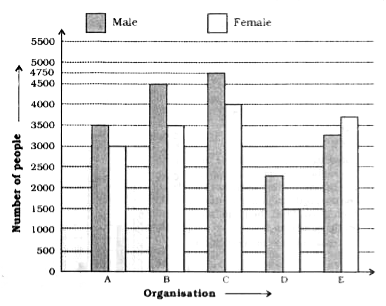What is male heterogamy?Describe it in different organisms.
Step-by-Step Text Solution:
1. Definition of Male Heterogamy:
Male heterogamy refers to a condition in which the male produces two different types of gametes, leading to the determination of the sex of the offspring. In this scenario, males have two different sex chromosomes, while females typically have two of the same type.
2. Example in Humans:
- In humans, the sex determination system is based on the XX-XY system.
- Females have two X chromosomes (XX), which means they produce only one type of gamete (X).
- Males have one X and one Y chromosome (XY), which allows them to produce two types of gametes: 50% X and 50% Y.
- The sex of the offspring is determined by the type of sperm that fertilizes the egg. If an X-bearing sperm fertilizes the egg, the offspring will be female (XX). If a Y-bearing sperm fertilizes the egg, the offspring will be male (XY).
3. Example in Grasshoppers:
- In grasshoppers, the sex determination system is based on the XX-0 system.
- Females have two X chromosomes (XX), which means they produce only one type of gamete (X).
- Males have one X chromosome and no second sex chromosome (X0), allowing them to produce two types of gametes: 50% X and 50% no X (0).
- Similar to humans, the sex of the offspring is determined by whether the egg is fertilized by an X-bearing sperm (resulting in a female) or a sperm that does not carry an X chromosome (resulting in a male).
4. Conclusion:
In both humans and grasshoppers, male heterogamy is evident as males produce two types of gametes, which plays a crucial role in determining the sex of the progeny. This highlights the significance of male gametes in sex determination across different organisms.
Male heterogamy refers to a condition in which the male produces two different types of gametes, leading to the determination of the sex of the offspring. In this scenario, males have two different sex chromosomes, while females typically have two of the same type.
- In humans, the sex determination system is based on the XX-XY system.
- Females have two X chromosomes (XX), which means they produce only one type of gamete (X).
- Males have one X and one Y chromosome (XY), which allows them to produce two types of gametes: 50% X and 50% Y.
- The sex of the offspring is determined by the type of sperm that fertilizes the egg. If an X-bearing sperm fertilizes the egg, the offspring will be female (XX). If a Y-bearing sperm fertilizes the egg, the offspring will be male (XY).
- In grasshoppers, the sex determination system is based on the XX-0 system.
- Females have two X chromosomes (XX), which means they produce only one type of gamete (X).
- Males have one X chromosome and no second sex chromosome (X0), allowing them to produce two types of gametes: 50% X and 50% no X (0).
- Similar to humans, the sex of the offspring is determined by whether the egg is fertilized by an X-bearing sperm (resulting in a female) or a sperm that does not carry an X chromosome (resulting in a male).
In both humans and grasshoppers, male heterogamy is evident as males produce two types of gametes, which plays a crucial role in determining the sex of the progeny. This highlights the significance of male gametes in sex determination across different organisms.
Topper's Solved these Questions
- PRINCIPLES OF INHERITANCE AND VARIATIONBOOK - MODERN PUBLICATIONCHAPTER - PRINCIPLES OF INHERITANCE AND VARIATIONEXERCISE - REVISION EXERCISES (SHORT ANSWER TYPE-II QUESTIONS (B. QUESTIONS FROM CBSE EXAMINATIONS)
18 Videos
- PRINCIPLES OF INHERITANCE AND VARIATIONBOOK - MODERN PUBLICATIONCHAPTER - PRINCIPLES OF INHERITANCE AND VARIATIONEXERCISE - REVISION EXERCISES (LONG ANSWER TYPE QUESTIONS(A.QUESTIONS FROM STATE BOARD EXAMINATIONS:))
38 Videos
- PRINCIPLES OF INHERITANCE AND VARIATIONBOOK - MODERN PUBLICATIONCHAPTER - PRINCIPLES OF INHERITANCE AND VARIATIONEXERCISE - REVISION EXERCISES (SHORT ANSWER TYPE-I(B. QUESTIONS FROM CBSE EXAMINATIONS))
17 Videos
- ORGANISMS AND POPULATIONS BOOK - MODERN PUBLICATIONCHAPTER - ORGANISMS AND POPULATIONS EXERCISE - Chapter Practice Test (Section - E)
2 Videos
- REPRODUCTION IN ORGANISMSBOOK - MODERN PUBLICATIONCHAPTER - REPRODUCTION IN ORGANISMSEXERCISE - CHAPTER PRACTICE TEST (SECTION - C)
3 Videos
Similar Questions
Knowledge Check
Male heterogamy found in case of
AXO type male in GrasshopperBXY type male in humanCZW male in birdsD1 and 2 bothA: The higher organisms must evolve a special mechanism for gamete transfer.
R: Male and female gametes are formed in different individuals.AIf both Assertion & Reason are true and the reason is the correct explanation of the assertion, then mark (1)BIf both Assertion & Reason are true and the reason is not the correct explanation of the assertion, then mark (2)CIf Assertion is true statements but Reason is false then mark (3)DIf both Assertion and Reason are false statements, then mark (4)The following bar-diagram shows total number of males and females in five different organisations. Study it carefully to answer the questions.

What is the difference between the total number of females and the total number of males from all the organisations together?A2005B2050C2500D2055
Respiratory Organs in Different Organisms
View SolutionDescribe the role of light on organisms.
View SolutionWhat is oogenesis? Describe different phases of oogenesis giving a labelled diagram.
View SolutionDescribe the importance of respiration in organisms.
View SolutionWhich are the different organs in body of organisms ?
View Solution
